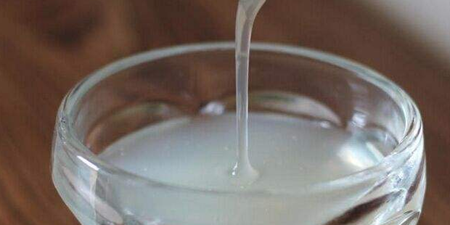Application of Defoaming Agent in Dyeing and Finishing Production
During the production and processing of knitted fabric printing and dyeing, foaming causes the fabric to float on the water surface, and in severe cases, cloth blocking occurs (overflow jet dyeing machine). At this time, people often hope to use low-foaming surfactants to meet the needs of various fast and efficient processes, so defoamers become the preferred auxiliary agents for technicians.
Defoamers use organic compounds such as alcohols, ethers, and silicone oils to immerse in surfactant foam and extend in all directions, making the foam thinner and destroying the directional molecular adsorption layer formed on the gas-liquid surface (interface) until the foam breaks.
In the past, many printing and dyeing companies did not understand the dosage and performance of defoamers when using defoamers during operation, so they found that the surface of the fabric was stained with irregular oily substances when the grey fabric came out of the cylinder after only a few cylinders. When encountering this phenomenon for the first time, it is unclear where so many oily substances come from, because this oily substance (dyeing what color, that is, what color of oily substance) is attached to the surface of the fabric and is very bright. When you touch it with your hand, it penetrates into the fabric, and there are traces of stains when you take it out, and it is also impossible to remove it. After searching for the cause from many aspects, it was analyzed that the oil was caused by the demulsification of the defoamer. Once the fabric is stained with this dirt, it is difficult to remove it. After many experiments, it was found that the greater the amount of defoamer used, the more serious this phenomenon is. It is more obvious for chemical fiber fabrics such as polyester-cotton and pure polyester (while this phenomenon does not occur on machines without defoamers). At the same time, it was also noted that the water quality of our factory is relatively hard, and there are more metal ions such as Ca2+, Mg2+, and Fe2+. When the defoamer breaks the emulsification, the result will be oil separation, which will cause the oil to float in the dye liquor and combine with the scum and dirt produced by metal ions or impurities in fibers, auxiliaries, and dyes to produce irregular spots, color blocks, and oil stains adhering to the fabric. Therefore, while eliminating foam, it also brings many unfavorable factors and negative effects, and even causes economic losses.
In response to these situations, the new defoamer for printing and dyeing has solved the above problems. The product has the following characteristics:
1. Fast defoaming speed and good anti-foaming durability;
2. Easily soluble in water and easy to use. Especially suitable for the production of non-ionic surfactant systems;
3. Wide range of applications, can be used in high temperature and high pressure overflow dyeing and various printing and dyeing processes;
4. Excellent storage stability.







